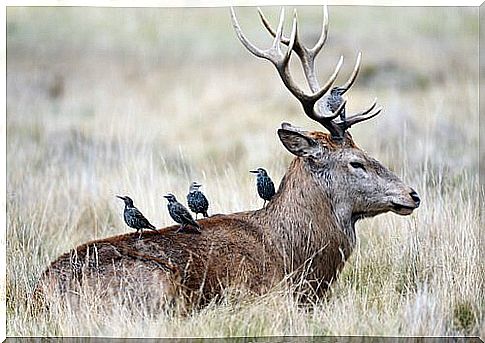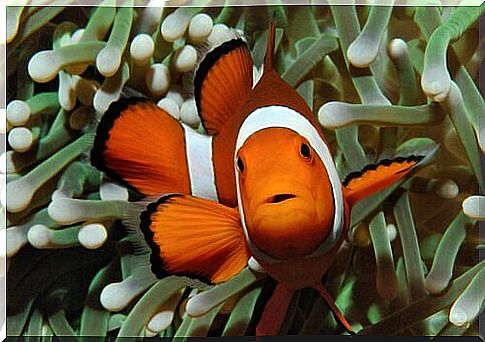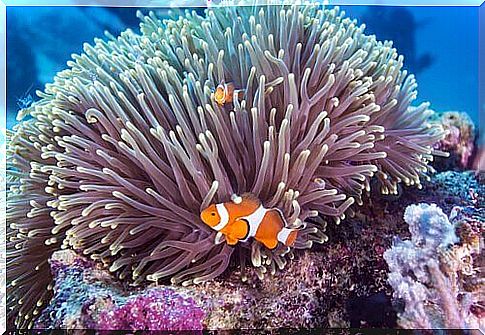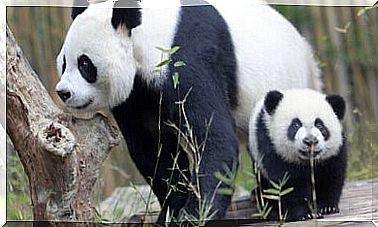Do You Know What Animal Symbiosis Is?

The term symbiosis derives from the Greek (“sýn” plus “vióo”) and literally means living together . In zoology, this word identifies a particular behavior that creates an advantage starting from the coexistence of two species. Often also very different from each other. In this article we will explain what animal symbiosis is, how it works and how it allows living beings to establish interactive biological relationships, useful for their survival.
Definition of animal symbiosis
When a strong and stable interaction arises between two animals, but also between animals and plants, we speak of a symbiotic relationship. From the union of several living beings, a strategic collaboration arises that offers benefits to those who participate. In an absolutely natural way.
It should be remembered that, in reality, not all symbiotic relationships are good for all types of species. In many cases, some of the species could be harmed by this relationship.
Animal symbiosis encompasses a series of interactive biological relationships that produce benefits for some of the species involved. These interactions must be established between similar living things, including between animals and plants. However, they must persist over time to be considered symbiosis.

There are several types of symbiosis, globally, which can be easily divided into 2 main groups:
- Endosymbiosis. It occurs when one of the beings participating in this relationship lives inside the organism of the other. Normally, inside cells, at the level of the digestive system.
- Ectosymbiosis. In this case, the symbionts live together, but on the outermost level. Generally, one of the two species lives on or under the body of its “host”.
Types of symbiosis in the animal kingdom
The degree of integration developed between symbiotic beings generates different types of interactions. Many animals live together to benefit from each other’s presence, establishing a simple type relationship.
However, some species manage to make genetic transfers and generate new individuals, which results in an intense interaction. Next, we summarize the main characteristics of the 3 main types of symbiosis in the animal kingdom:
1. Mutualism
The mutualism is the form most advantageous for symbiosis that two animals can establish in their coexistence. These interactions are inspired by the popular use of the expression “symbiotic relationship”, which presupposes a “positive-positive” interaction. In short, all participants benefit from it.

It can be established as a direct exchange of resources or services or as a peer interaction. But the two species always equally benefit from mutualism and improve their biological fitness through this relationship.
2. Commensalism
In commensalism, biological interaction generates benefits only for one of the species involved. However, the other animal takes no harm from that one vantage point, either directly or indirectly. It would be a kind of “positive-neutral” relationship.
3. Parasitism
Parasitism presupposes an unbalanced relationship, in which one of the species is harmed while the other only benefits. That is, a “positive-negative” interaction. Generally, parasitic symbioses pose a serious health risk to the host animal .

Examples of symbiosis in the animal world
To improve understanding of the types of symbiosis in the animal kingdom, let’s see some concrete examples of mutualism, parasitism and commensalism.
Examples of mutualism
Ruminant mammals have several microorganisms in their stomach cavities. The natural action of these microorganisms allows herbivorous animals to digest the cellulose present in plants. At the same time that digestion occurs, these positive bacteria perform a positive task for the host while, at the same time, they also feed.
Something very similar happens in the intestinal flora of humans, which is full of beneficial bacteria. These little creatures aid in the digestion of food and protect the colon and intestines. On the other hand, they receive a safe haven, where the molecules necessary for their good nutrition abound. As we can see, this is another demonstration of endosymbiotic mutualism .
Examples of commensalism
The most classic example of commensalism occurs when vultures feed on prey killed by other predators. Since these birds cannot hunt, they must consume these remnants of meat to survive. Although it benefits only one species, this commensal relationship does not harm or interfere with the welfare of other animals.
Examples of parasitism
A common example of this symbiotic relationship occurs when certain parasites affect pets, wild animals, or even humans. When we talk about endoparasites , such as tapeworms or worms, we are therefore talking about a parasitic endosombiosis. In case we consider ticks or fleas, we get an example of parasitic ectosymbiosis.









